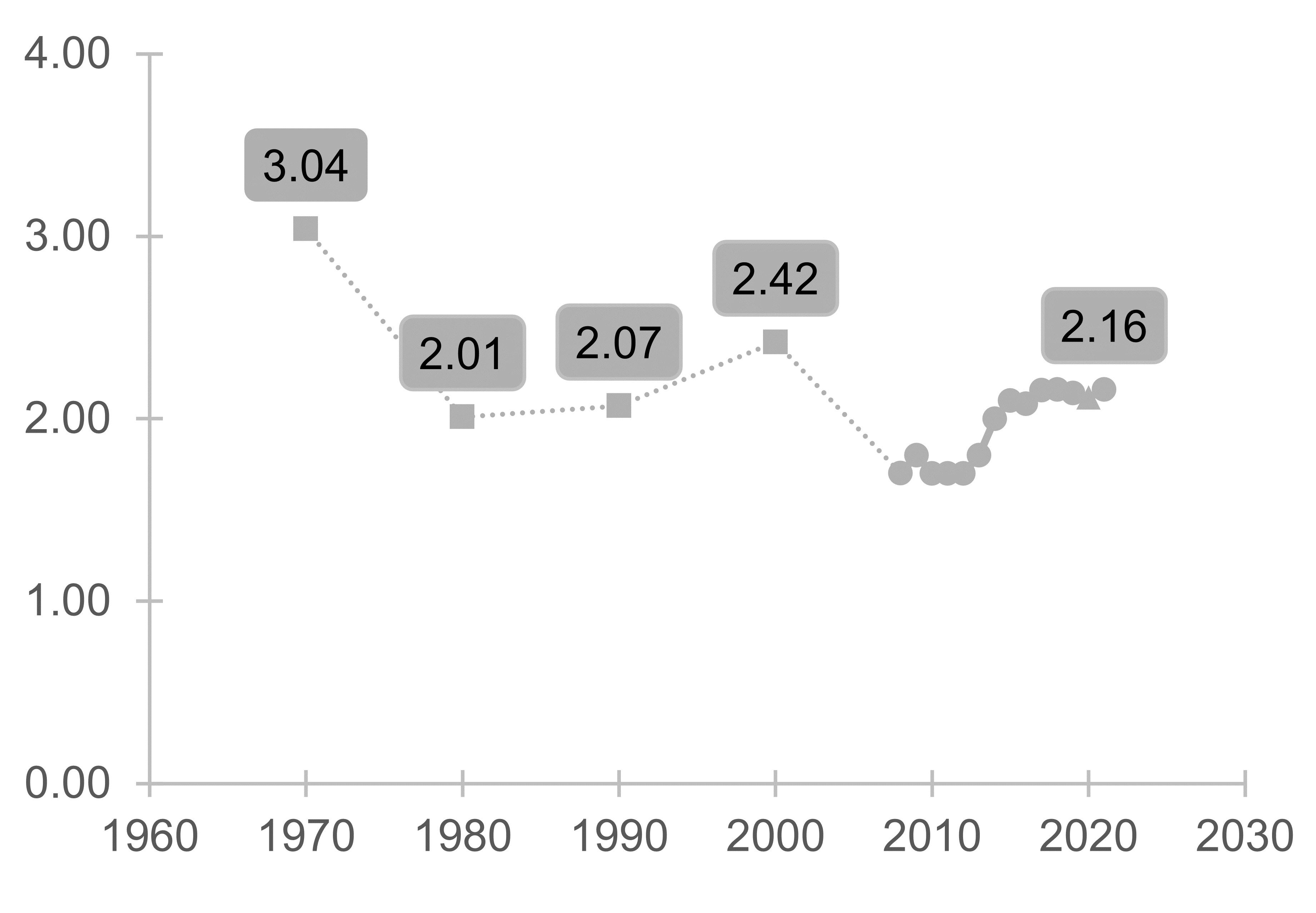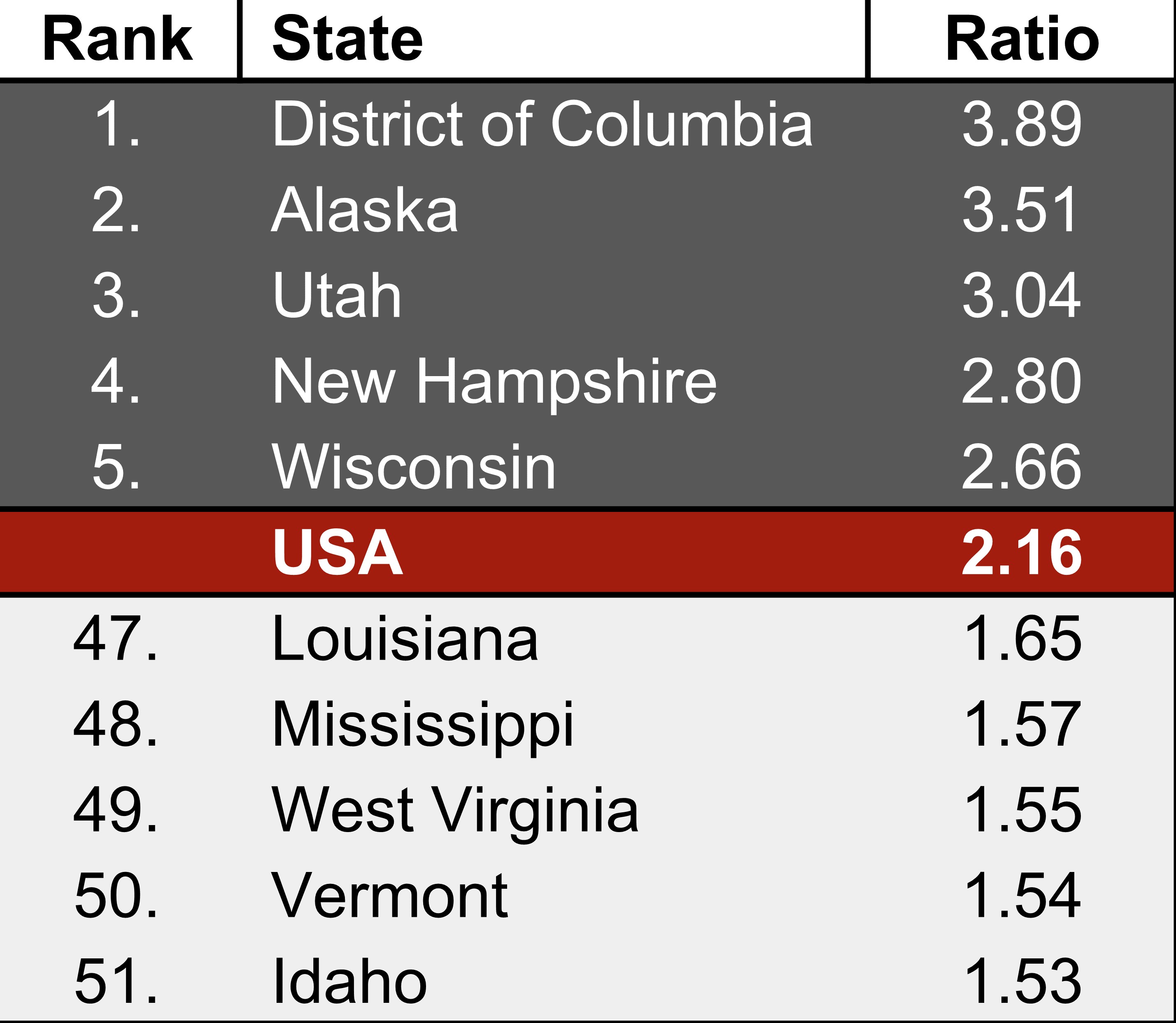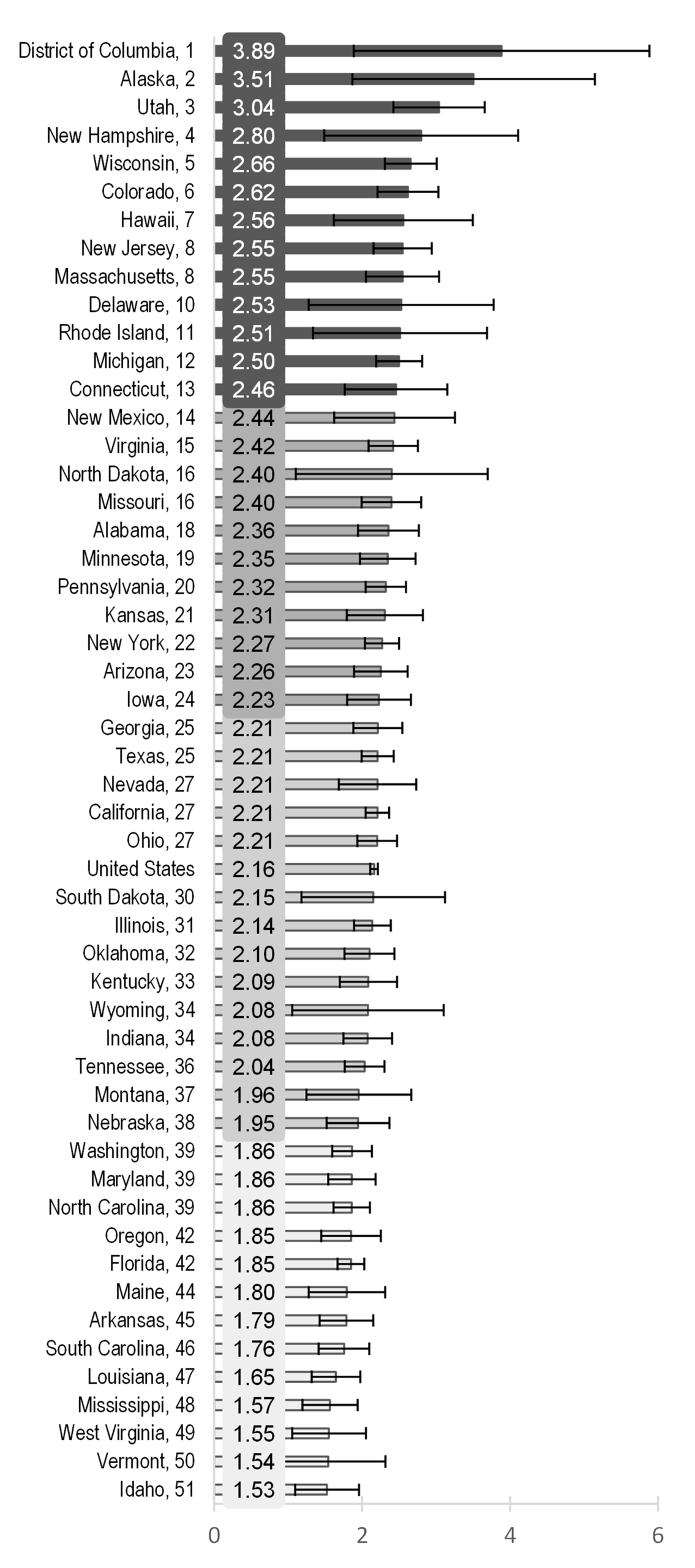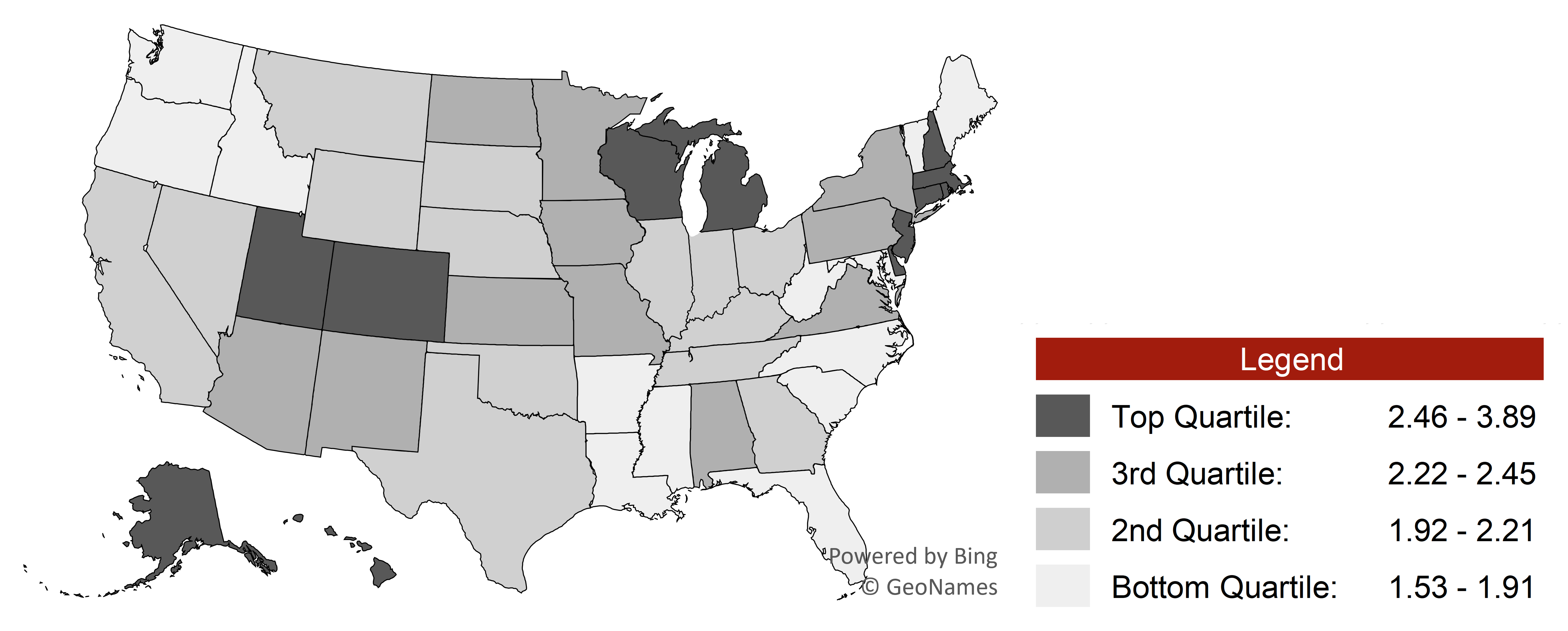Marriage-to-Divorce Ratio in the U.S.: Geographic Variation, 2021
Family Profile No. 27, 2022
Authors: Francesca A. Marino & Gabrielle Juteau
This family profile updates previous profiles on the marriage-to-divorce ratio (Reynolds, 2020; Schweizer, 2019; Schweizer, 2019b; Wu, 2017; Eickmeyer, 2015) and examines state variation in the ratio of marriages to divorces. Using recent American Community Survey (ACS) data, we calculate national and state level marriage-to-divorce ratios by dividing the number of women’s marriages by the number of women’s divorces for a given population in a given year.
U.S. Marriage-to-Divorce Ratio
- In 2021, there were approximately two marriages per every one divorce in the United States (ratio = 2.16). Specifically, there 2,052,806 marriages and 948,862 divorces.
- The ratio has remained stable since 2014, when there were approximately two marriages for every one divorce (FP-15-19). This indicates that the changes in marriage are occurring at the same pace as changes in divorce.
Figure 1. Women’s Marriage-to-Divorce Ratios, 1970 to 2021

Five Highest and Lowest Marriage-to-Divorce Ratios, 2021
- All states had a greater number of marriages than divorces. District of Columbia (3.89), Alaska (3.51), and Utah (3.04) had the highest marriage-to-divorce ratio in 2021. There were at least 3 marriages per every one divorce in these states.
- The states with the lowest marriage-to-divorce ratios were Idaho (1.53), Vermont (1.54), and West Virginia (1.55). In these states there were 1.5 marriages for every one divorce.
Figure 2. Women's Highest and Lowest Marriage-to-Divorce Ratios, 2021

State Rankings and Geographical Variation in Marriage-to-Divorce Ratio, 2021
- Among states in the Northeast, most of the ratios were in the highest quartile, meaning they had some of the largest ratios of marriages-to-divorces in 2021.
- For those in the Western region of the U.S., their ratios most often fell in the lowest quartiles (31% each).
- Among states in the South, most were in the bottom quartile), meaning they had some of the smallest ratios of marriages-to-divorces in 2021.
- Midwestern states tended to cluster in the two middle quartiles, with two-fifth of their states in each.
Figure 3. State-level Marriage-to-Divorce Ratios Among Women Aged 15+ by Quartile, 2021

Figure 4. Geographic Variation in Marriage-to-Divorce Ratios Among Women Aged 15+, 2021

References:
Clarke, S. C. (1995). Advance Report of Final Marriage Statistics, 1989 and 1990. Monthly Vital Statistics Report, (43)12. National Center for Health Statistics. http://www.cdc.gov/nchs/data/mvsr/supp/mv43_12s.pdf
National Center for Health Statistics (1974). Summary Report Final Marriage Statistics, 1970. Monthly Vital Statistics Report, Vol. 23, No. 2, Supp. 1. U.S. Department of Health, Education, and Welfare. http://www.cdc.gov/nchs/data/mvsr/supp/mv23_02s1acc.pdf
National Center for Health Statistics (1983). Advance Report of Final Marriage Statistics, 1980. Monthly Vital Statistics Report, Vol. 32, No. 5, Supp. U.S. Department of Health and Human Services. http://www.cdc.gov/nchs/data/mvsr/supp/mv32_05s.pdf
National Center for Health Statistics (2001). Births, Marriages, Divorces, and Deaths: Provisional Data for January-December 2000. National Vital Statistics Reports, Vol. 49, No. 6. Associated Table 3. Department of Health and Human Services, Centers for Disease Control and Prevention. http://www.cdc.gov/nchs/data/nsvr/nsvr49/49_06_12_03.pdf
Reynolds, L. R. (2020). Marriage to Divorce Ratio in the U.S.: Geographic Variation, 2019. Family Profile, (FP-20-26). National Center for Family & Marriage Research. https://doi.org/10.25035/ncfmr/fp-20-26
Schweizer, V. (2019). Marriage to Divorce Ratio in the U.S.: Geographic Variation, 2018. Family Profile, (FP-19-24). National Center for Family & Marriage Research. https://doi.org/10.25035/ncfmr/fp-18-24
Schweizer, V. (2019). Marriage to Divorce Ratio in the U.S.: Geographic Variation, 2017. Family Profile, (FP-19-03). National Center for Family & Marriage Research. https://doi.org/10.25035/ncfmr/fp-19-03
Wu, H. (2017). Marriage to Divorce Ratio in the U.S.: Geographic Variation, 2015. Family Profile, (FP-17-01). National Center for Family & Marriage Research. https://www.bgsu.edu/content/dam/BGSU/college-of-arts-and-sciences/NCFMR/documents/FP/wu-mar-to-div-ratio-2015-fp-17-01.pdf
Eickmeyer, K.J. (2015). Marriage to Divorce Ratio in the U.S.: Geographic Variation, 2014. Family Profile, (FP-15-19). National Center for Family & Marriage Research. https://www.bgsu.edu/ncfmr/resources/data/family-profiles/spangler-brown-lin-hammersmith-wright-divorce-fp-15-09.html
Suggested Citation:
Marino, F. A. & Juteau, G. (2022). Marriage-to-divorce ratio in the U.S.: Geographic variation, 2021. Family Profile, FP-22-27. National Center for Family & Marriage Research. https://doi.org/10.25035/ncfmr/fp-22-27
Updated: 11/07/2025 04:36PM


